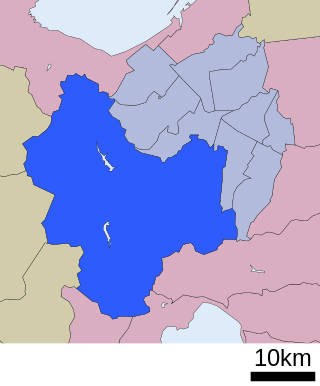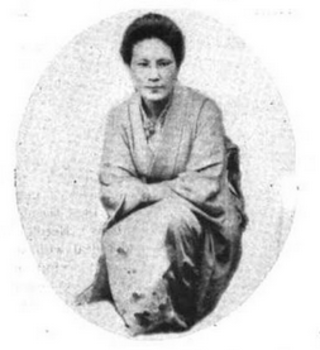History
The history of Hokusei Gakuen University goes back in time to 1887, when an American missionary of the United Presbyterian Church of North America, Sarah Clara Smith founded "Smith Girls' School." In 1894, the school was relocated and renamed "Hokusei Women’s School" as Japanese scholar Inazo Nitobe recommended.
After Smith returned to the United States, the school experienced several renovations and expansions. In 1962, Hokusei Gakuen University was officially founded with the Department of English, Department of Social Welfare, and School of Humanities.
In 2007, the Hokusei Gakuen School System marked its 120th anniversary since the foundation of Smith Girls’ School and planned to have a ceremony in Chūō-ku, Sapporo with other Hokusei Gakuen schools: Hokusei Gakuen University Junior College, Hokusei Gakuen University High School, Hokusei Gakuen Girls' Junior & Senior High School, and Hokusei Yoichi High School.

Nitobe Inazō was a Japanese agronomist, diplomat, political scientist, politician, and writer. He studied at Sapporo Agricultural College under the influence of its first president William S. Clark and later went to the United States to study agricultural policy. After returning to Japan, he served as a professor at Sapporo Agricultural College, Kyoto Imperial University, and Tokyo Imperial University, and the deputy secretary general of the League of Nations. He also devoted himself to women's education, helping to found the Tsuda Eigaku Juku and serving as the first president of Tokyo Woman's Christian University and president of the Tokyo Women's College of Economics.

Tokyo Woman's Christian University, often abbreviated to TWCU or Tonjo, is an independent Protestant university in Tokyo, Japan.

Toyo University is a private university with the main Hakusan campus in Bunkyo, Tokyo, Japan. The university operates multiple satellite campuses in the Kanto region, including. Asaka, Kawagoe, Itakura, and Akabane.

Atsubetsu-ku (厚別区) is one of the ten wards in Sapporo city, Japan. The ward was split from Shiroishi-ku on November 6, 1989.

Chūō-ku is one of the ten wards in Sapporo, Hokkaido, Japan. Chūō-ku means "central ward" in Japanese. City administration and entertainment facilities are centred in this ward.

Tezukayama University is a private university in Nara, Japan. Tezukayama University has two campuses—one in Gakuen-mae (学園前) in Nara city, and the other in eastern Ikoma (東生駒). Tezukayama University has many facilities in a historical setting.

Nanzan University is a private, Catholic and coeducational higher education institution run by the Society of the Divine Word (SVD) in the Shōwa Ward of Nagoya City, Aichi Prefecture, Japan. It is considered to be one of the most prestigious private universities in the Chūbu region.

Minami-ku (南区) is one of the 10 wards in Sapporo, Hokkaidō, Japan. Minami-ku is directly translated as "south ward". Having the area of 657.48 km2 in total, Minami-ku occupies 60 percent of the area of Sapporo.

Hokkai Gakuen University is a private university in Sapporo, Hokkaidō, Japan. The precursor of the school was founded in 1885, and it was chartered as a university in 1952.

Otaru University of Commerce is a national university in Japan. The main campus of the university is in Otaru, Hokkaido, with a satellite campus in Chūō-ku, Sapporo.

Hyogo University is a private university in Japan. Its campus is located in Shinzaike, Hiraoka-cho, Kakogawa, Hyōgo Prefecture. The university is one of the seven schools run by Mutsumi Gakuen (睦学園), a school foundation with a Buddhist background.

Tokai Gakuen University, abbreviated as TGU, is a Japanese private university located in Miyoshi, Aichi within the Chubu of Japan. It has a campus in Tempaku-ku, Nagoya.The predecessor of the school dates back to the Meiji era (1888) when it started as a Jodo Buddhist school in Aichi, and was chartered as a university in 1995.
Kinjo Gakuin University is a private women's university in Moriyama-ku, Nagoya, Aichi Prefecture, Japan.
Sapporo Gakuin University is a private university in Ebetsu, Hokkaido, Japan. Its predecessor, a vocational school, was founded in 1946. It was chartered as a junior college in 1950. A four-year college opened in 1968; it adopted the name Sapporo Gakuin University in 1984. The junior college was closed in 1979.

Tokyo University of Social Welfare (TUSW) is a private university in with its main campus in Ikebukuro, Toshima, Tokyo; Kita, Tokyo; Naka-ku, Nagoya; and Isesaki, Gunma.

Kami-Nopporo Station is a railway station of the Chitose Line located in Atsubetsu-ku, Sapporo, Hokkaidō, Japan, operated by Hokkaido Railway Company. The station is numbered H06.

Ōyachi Station is a Sapporo Municipal Subway station in Atsubetsu-ku, Sapporo, Hokkaido, Japan. The station is numbered T17.

Kawai Michi was a Japanese educator, Christian activist, and proponent of Japanese-Western ties before, during, and after World War II. She served as the first Japanese National Secretary of the YWCA of Japan and founded Keisen University.

The Hokkaido University poplar avenue is a path lined with poplar trees, situated in the Hokkaido University campus in Sapporo, Japan. It extends from the back of the Psychology Department to the first of Hokkaido University's farms. The avenue is a well-known symbol of the university, and is introduced as one of the three most famous attractions in Sapporo on the Japan National Tourism Organization's website for visitors to Japan.



















